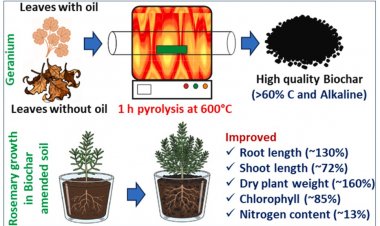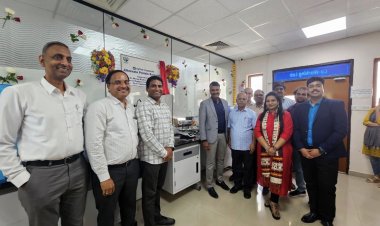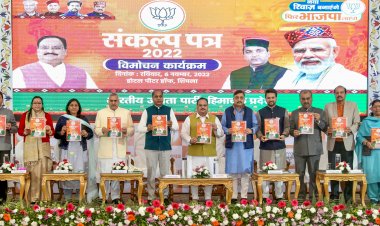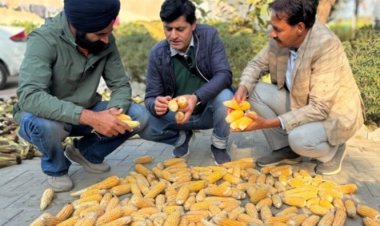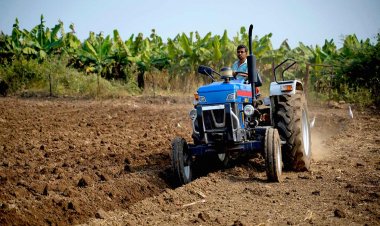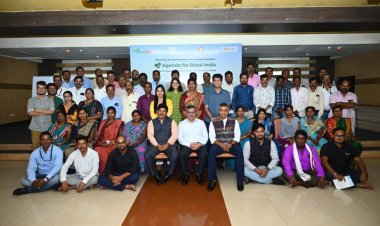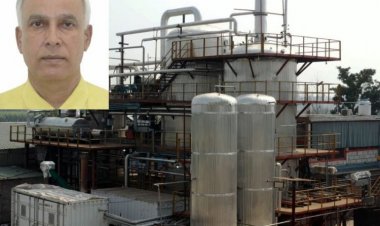Testing milk adulteration at Rs 10 with a strip developed by NDRI, Karnal
New methods are being devised to increase the SNF content and produce synthetic milk in order to indulge in profiteering. Urea, glucose, detergent powder, refined oil, starch etc. are used to produce such milk. This synthetic milk is then mixed with genuine milk so that it can pass off as genuine milk.
All of us know that milk is good for health, but who knows, you might be consuming poison in disguise. Profiteering drives unscrupulous people to adulterate milk with dangerous substances like detergent, urea, synthetic starch etc. to increase the content of solid not fat (SNF). They take advantage of the consumer being unable to test adulteration. The National Dairy Research Institute (NDRI), Karnal, has made a testing kit that is quite cheap and can detect adulteration in very little time. Dr Rajan Sharma, Principal Scientist, Dairy Chemistry Division, NDRI, Karnal gave information about the milk testing kit to Rural Voice in an interview. You may watch this show by clicking on the video link given above.
According to Dr Sharma, mixing water in milk is an age-old phenomenon. You may check this with a lactometer. But now new methods are being devised to increase the SNF content and produce synthetic milk. Urea, glucose, detergent powder, refined oil, starch etc. are used to produce such milk. This synthetic milk is then mixed with genuine milk so that it can pass off as genuine milk. Khoya and paneer are prepared from synthetic milk in huge quantities and supplied during festivals.
Neutralizer is mixed to cover up the acidity or sourness. Similarly, sugar is mixed to increase the SNF content. Hydrogen peroxide, which is banned by the Food Safety and Standards Authority of India (FSSAI), is mixed to prolong the shelf life of milk. Machines that test harmful substances and chemical adulteration in milk cost from Rs 5 lakh to Rs 80 lakh. This is why milk quality is tested in only select labs. Besides, chemical testing, one of the oldest methods of testing milk, requires a lot of skill and not everyone is qualified enough.
Dr Sharma said, “We, therefore, needed a technique which should not only be cheap but can also be used by anyone without much trouble.” NDRI, Karnal, has developed a milk testing kit that is quite cheap and can detect milk adulteration in little time. The amount of urea, starch, detergent powder, glucose neutralizer, refined oil and hydrogen peroxide present in milk can be detected with the help of the strip. The Institute has developed eight kinds of strip to detect adulteration. The strip is dipped in milk and the result is obtained in mere 8-10 minutes.
There is a separate strip for each adulterating substance. The colour of the strip changes according to the level of adulteration. Dr Sharma said, “Vegetable oil is mixed in milk to increase the fat percentage but it cannot dissolve in milk. Detergent powder is used to make it dissolve in milk. If there is detergent powder in milk, the strip turns blue.”
A yellow paper strip has been developed to detect the presence of urea in milk. When dipped in milk, the yellow strip turns red, indicating the presence of urea in it. If there is no urea in the milk, the strip turns pink or yellow. The result is obtained in three minutes.
Dr Sharma said, “Mixing glucose and sugar in milk increases its SNF content.” He said that 100 ml of milk contains 5 mg of natural glucose. It takes 10 minutes to check whether glucose has been added to the milk. If the dipped strip turns red, it indicates that there is additional glucose and sugar in the milk. If these are not present additionally, the strip remains white. It may be used to test whether glucose or sugar has been mixed in khoya and curd.
According to Dr Sharma, neutralizers like sodium hydroxide, sodium carbonate and sodium bicarbonate that are banned by the FSSAI are added to milk to cover up the sourness or acidity of the adulterated milk or to increase its shelf life. A strip has been developed to detect the presence of neutralizers also. If a neutralizer has been added to the milk, the strip turns yellow or dark green; otherwise, it appears light green.
Dr Sharma said that the biggest advantage of this technique could be seen at milk collection centres where farmers come with 5-10 litres of milk. Milk quality can be tested at such places through this strip. It is also used at big dairy farms. Labs are not required. It is extremely easy to test milk quality and deliver pure milk to the consumers with the help of this technique.
Dairy companies in the country are using this strip to test their milk quality, said Dr Sharma. This can rein in the middlemen who adulterate milk. Dr Sharma said that all the eight strip tests together cost merely Rs 10-12. All the tests are completed in a span of 8-10 minutes.
Rural Voice also spoke to farmer-entrepreneur Babbar Singh from Karnal who runs Delmos Research Pvt. Ltd. Besides campaigning for the milk quality test strip, he is himself a user. The Dairy Technology B Tech said, “When we came to know about the milk quality test strip, I contacted NDRI, Karnal.” He added, “Adulterated milk has become a big problem today. This technique is in great demand in the market to test milk quality.”
Babbar Singh said, “We have entered into an agreement with the NDRI for technology marketing and we contact government and private dairy organizations and provide them with this strip. This improves the milk quality at their milk collection centres. Any sort of adulteration in milk is detected at the primary level itself through this kit.” He added, “The strip technique developed by NDRI, Karnal, can detect even the slightest adulteration in milk.”



 Join the RuralVoice whatsapp group
Join the RuralVoice whatsapp group

















